When thinking about starting a garden in the city, you might hear about two cool ways: hydroponics and aquaponics. Each one works differently. Hydroponics is all about growing plants in a water solution that has all the nutrients they need. You have to check this solution often to make sure it's just right.
Aquaponics combines fish and plants. The fish help the plants grow by providing natural nutrients, and the plants clean the water for the fish. It's like they help each other!
So, how do you pick one? Well, think about what matters more to you. If saving water is important, hydroponics might be better because it's really good at using water wisely. But if you like the idea of a mini ecosystem where plants and fish help each other, then aquaponics could be super exciting.
Each choice affects how much space you need and how much water you use. By understanding these differences, you can make the best choice for your city garden!
Key Takeaways
- Hydroponics lets you grow lots of plants in tall, stacked layers, saving a bunch of space in cities.
- Aquaponics is a cool mix where fish and plants help each other grow, which can make more money and be better for the earth.
- Starting a hydroponic garden costs less money and is easier to take care of.
- Aquaponics needs you to keep a close eye on the water to make sure both the fish and plants stay healthy.
- Both ways use way less water than regular dirt farming, which is great for keeping our cities green.
Defining Hydroponics
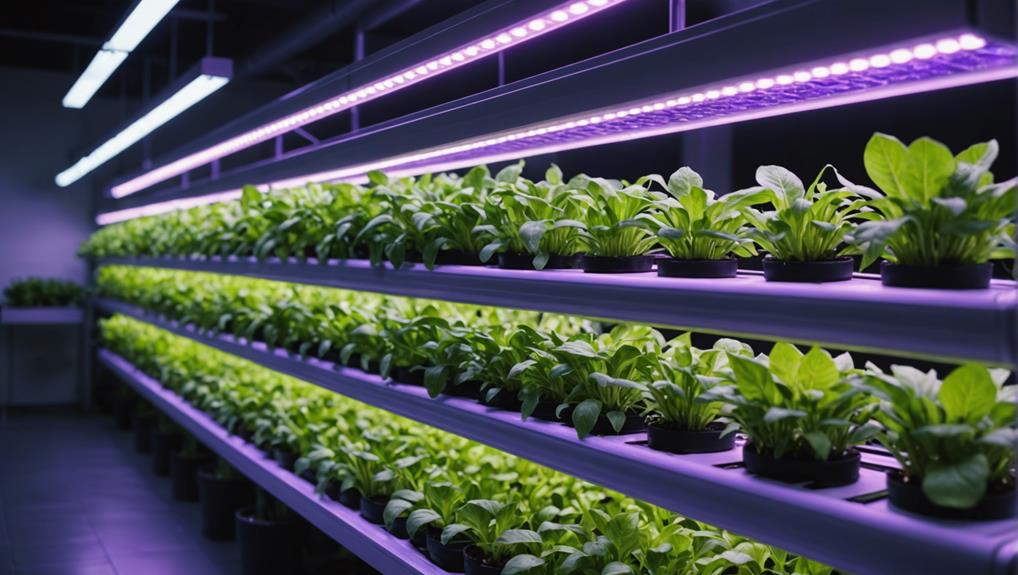
Hydroponics is a cool way to grow plants without using soil. Instead, plants get all their nutrients from a special water solution that has everything they need to grow. This method isn't only neat but also saves a lot of water—up to 90% less than regular farming!
This system keeps using the same water over and over, so hardly any is wasted. Plants in a hydroponic system can grow well because they get the exact amount of food and water they need. Plus, they can grow faster and healthier than in the dirt.
Using hydroponics also means fewer plant diseases and bugs that usually happen in soil, which is better for the environment because it cuts down on the need for harmful chemicals.
Since there's no need for soil, you can set up hydroponics anywhere, even in big cities where there isn't much space for farming. It's great because it lets people grow food all year round, no matter the weather outside.
Defining Aquaponics
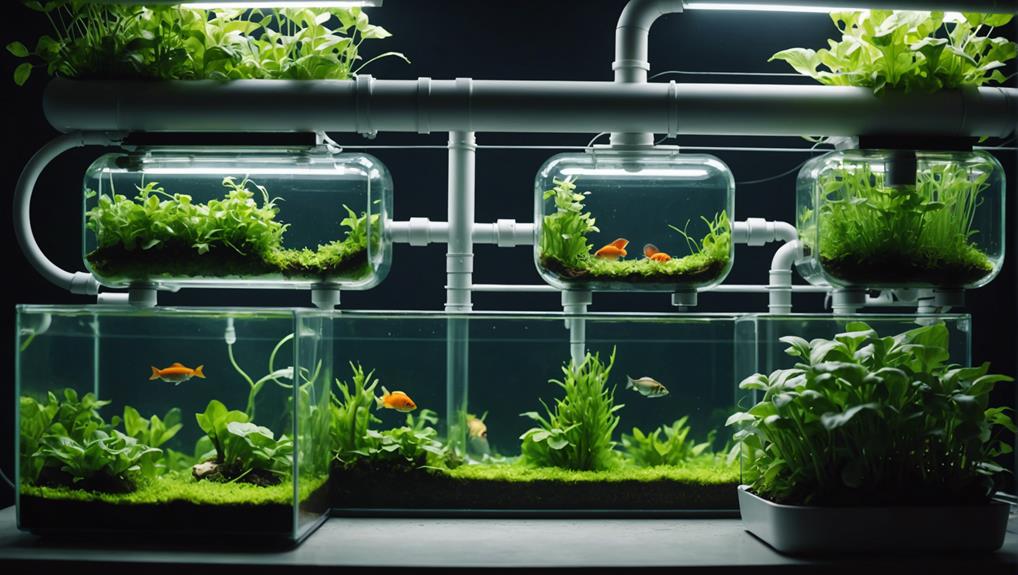
Aquaponics is a cool way to farm that combines growing fish and plants together. In this system, fish waste acts like a natural fertilizer for the plants. At the same time, the plants clean the water, which helps the fish stay healthy. The water keeps moving between the fish and the plants, so nothing gets wasted.
This type of farming is great for cities because it doesn't need a lot of space and it uses resources wisely. It helps make healthier food and doesn't harm the environment like some other farming methods can.
Aquaponics is a smart way to grow food and keep both plants and fish happy. It's like a mini ecosystem right in your backyard or city!
Water Usage Efficiency

Hydroponic and aquaponic systems are really good at saving water because they keep using the same water over and over again.
They use special ways to give just the right amount of water to plants, which helps save even more water.
This is especially helpful for growing food in cities where space and water might be limited.
Reducing Water Consumption
Urban farming, like growing plants and fish together, saves a lot of water. This is really cool in cities where there isn't much water available.
In hydroponics, plants grow without soil and use about 90% less water than regular farming. This is because the water keeps getting used over and over again. The system takes good care of the water so none is wasted, making sure plants get just what they need.
Aquaponics mixes growing plants with raising fish, which is even better for saving water. The fish waste is super useful because it acts as a natural fertilizer for the plants. Also, the water stays clean and gets reused because the plants and fish work together to keep it fresh.
These methods are great for cities because they help grow food without using a lot of water, making sure we can have lots of food without harming our planet. They show us smart ways to use water in farming.
Recycling Nutrient Solutions
Let's talk about a cool way to save water using special gardening methods called hydroponics and aquaponics.
Hydroponics is like a super smart way to grow plants without soil. Instead, plants get their food from water that has nutrients mixed in. This water keeps getting used over and over, so hardly any water is wasted. This is really handy, especially in cities where water can be hard to find.
Aquaponics is even cooler because it adds fish into the mix! The fish live in the water and their waste makes it full of good stuff that plants love. So, in this system, the fish help the plants grow by providing them with food, and the plants help keep the water clean for the fish. It's like they help each other out in a never-ending cycle, which means even less water and fewer resources are used.
Both ways, hydroponics and aquaponics, are great at saving water and are perfect for growing food right in the city, making them smart choices for the future of farming.
Optimizing Irrigation Techniques
Hydroponics and aquaponics are cool ways to grow plants without using a lot of water, which is super helpful in cities where saving water is important. In hydroponics, plants grow in water instead of soil, and this method uses up to 90% less water. The water goes straight to the plant's roots, which cuts down on wasted water from evaporation or runoff.
Aquaponics is like having a mini ecosystem. It combines growing plants with raising fish. The fish waste acts as a natural fertilizer for the plants. Then, the plants clean the water, which goes back to the fish. It's a smart cycle that keeps reusing the same water and helps grow healthy plants without extra chemicals.
Both methods work well in small spaces, making them great for city farming. They help save water and are a step towards farming in a more earth-friendly way.
Nutrient Delivery Systems
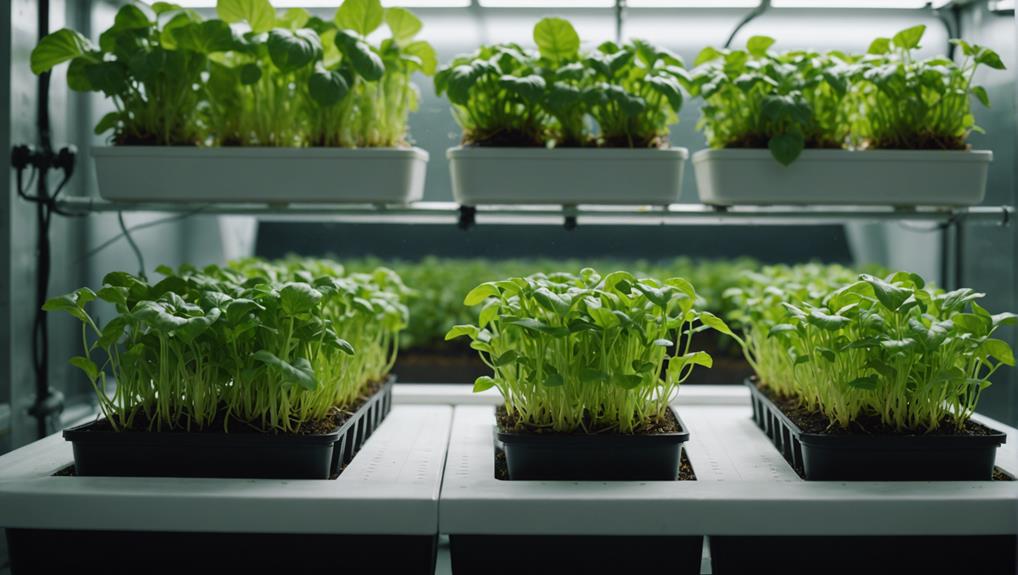
When we look at hydroponic and aquaponic systems, both use cool ways to feed plants the nutrients they need to grow well in cities.
Hydroponic systems mix water with special plant food. This makes it easy for plants to get exactly what they need to grow big and strong.
Aquaponic systems are different because they use fish. The fish make waste that turns into food for the plants. It's like a team where the fish, plants, and helpful bacteria all work together. This way, nothing goes to waste and everything helps everything else grow.
Both methods are great for growing plants in small spaces in cities. Whether you use hydroponics or aquaponics, the trick is to be really careful about how you give nutrients to your plants. This helps you grow more plants and keep them healthy.
Symbiotic Relationships
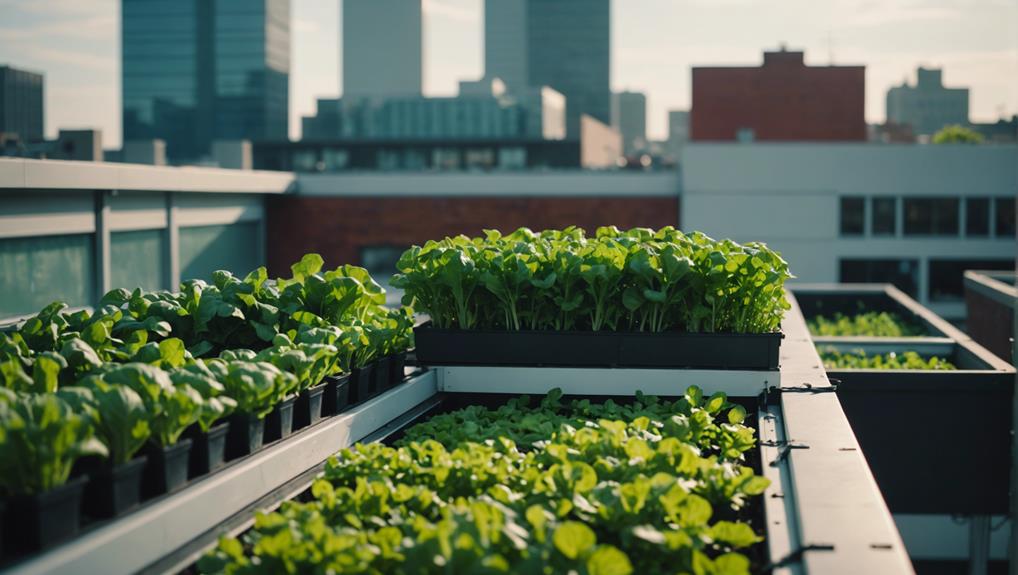
Aquaponics is a cool way of farming that helps both fish and plants grow together. Fish in the water make waste, which might sound yucky, but it's actually full of nutrients that plants love, like nitrogen, phosphorus, and potassium. These nutrients are like vitamins for the plants, helping them grow big and strong.
Instead of hurting the water with too much waste, the plants help clean it by sucking up all those nutrients. This cleaned water then goes back to the fish, and they continue to live in it happily. It's like the fish and the plants are helping each other to live better.
This method is different from another way called hydroponics, where people add nutrients to the water themselves. In aquaponics, the fish and plants work together naturally, which is better for the environment and doesn't need extra chemicals.
Crop Yield Comparisons

When we think about farming with water, there are two cool ways to do it: aquaponics and hydroponics.
Hydroponics is a super smart way to grow lots of plants fast. It feeds plants special food straight to their roots and lets farmers control everything, like how much food and water the plants get. This means plants grow big and fast, giving lots of fruits and veggies.
Aquaponics is a bit different because it uses fish. The fish help the plants grow by providing them natural food from their waste. But, turning fish waste into plant food isn't as quick or exact as the way hydroponics feeds plants. So, sometimes aquaponics doesn't grow as many plants as hydroponics, especially if things aren't perfect.
Both ways are great at using small spaces to grow a lot of food. If you want to grow the most food in a city garden, hydroponics might be better.
But aquaponics is also awesome because it helps the planet by recycling fish waste and grows both fish and veggies together.
Environmental Impact
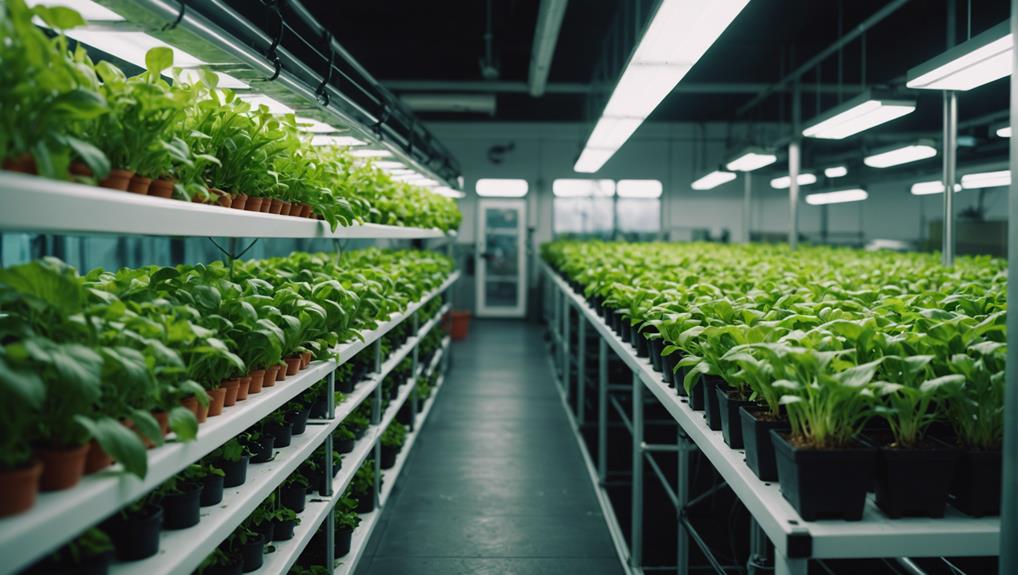
Hydroponic and aquaponic systems are cool ways to farm that use way less water than normal farming. These methods are good for the planet, especially in cities, because they help save a lot of water.
In hydroponics, water gets recycled. That means the same water is used over and over again, so hardly any water is wasted.
Aquaponics is even cooler because it combines fish farming with growing plants. The fish waste gives food to the plants, and the plants clean the water for the fish. It's like a mini eco-friendly cycle!
Both ways of farming cut down on the need for harmful chemicals like synthetic fertilizers and pesticides. This is great because it means less pollution going into rivers and lakes.
Using these smart farming methods in cities helps make the environment better. They show us how farming can get along well with nature, making our future greener and more sustainable.
Space Requirements
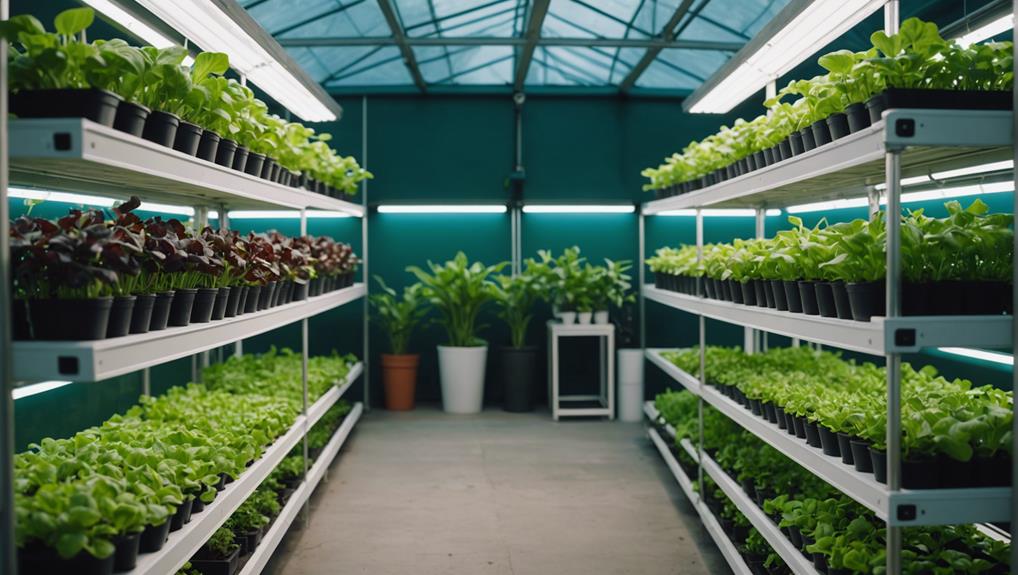
In city farming, it's super important to use space wisely. Hydroponic systems, which grow plants in water without soil, are great for this because they can be stacked up high. This means you can grow a lot of plants in a small area by building upwards.
Aquaponic systems, which mix plant growing and fish farming, need more room because of the big fish tanks required. These tanks take up a lot of space and make it hard to stack the plant trays high.
System Maintenance
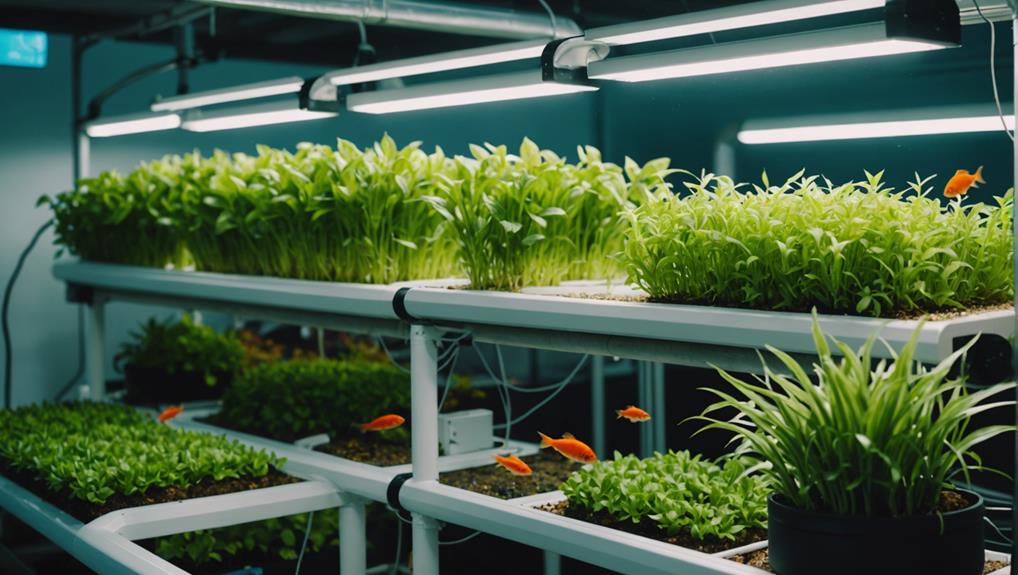
Keeping your city farm working well is important, especially if you use water-based systems like hydroponics or aquaponics. Here's how you can take care of them:
In aquaponics, where you grow plants and raise fish together, you need to watch the water closely. Make sure the water isn't too acidic or basic, and check if there's too much ammonia or other stuff from fish waste that could hurt the fish and plants. If things look off, you need to fix them to keep everyone healthy.
For hydroponics, where you grow plants in water without soil, it's all about giving your plants the right food through nutrients in the water. You also need to keep the water the right temperature and make sure there's enough oxygen for the plant roots.
Here are some tips:
- Test the water regularly to make sure it's good for your fish and plants.
- Change the nutrients in the water as needed, based on what your plants need at different times as they grow.
- Keep an eye on what you feed the fish in aquaponics to keep the system balanced.
- Always check your system to keep it clean and make sure nothing is blocking the water flow.
Economic Viability
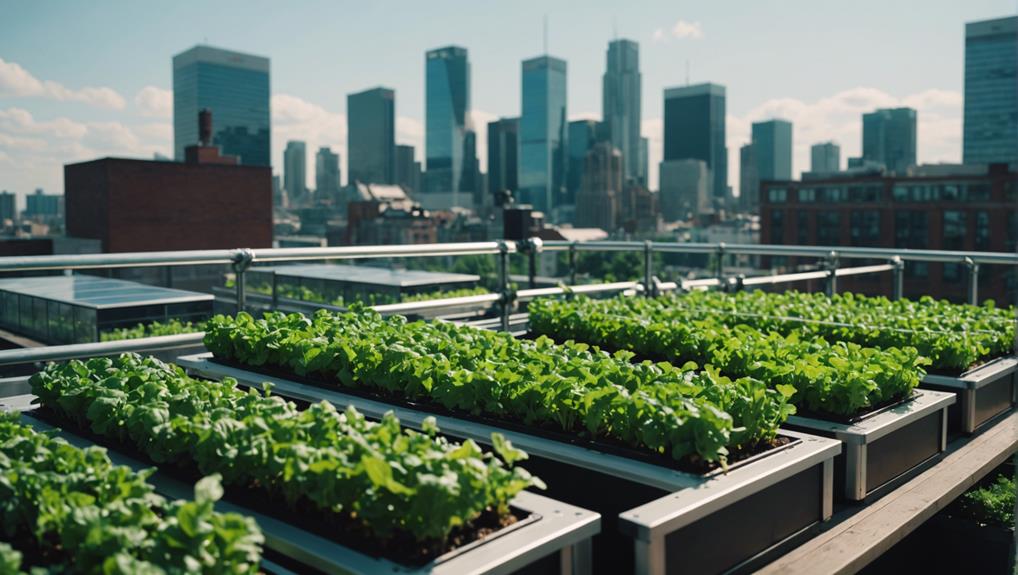
When choosing between aquaponic and hydroponic methods for city farming, you need to think about what works best for you money-wise. Aquaponics combines growing fish and plants together. This can make more money because you can sell both the fish and the plants. People really like buying organic and local food these days, so this could work well.
On the other hand, hydroponics, which is just growing plants in water without soil, might seem cheaper at first. It doesn't need the fancy water systems that aquaponics does, so it costs less to start. Also, it's usually easier to take care of than aquaponics because you don't have to worry about the fish.
But, if you're thinking about the long run, aquaponics might be better. It lets you make money from both fish and plants, and it's good for the planet too, which is something a lot of people care about in cities.

